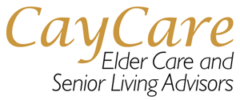Why do we have Easter eggs?
Although eggs were a symbol of fertility and rebirth in pagan cultures, Easter eggs were used by early Christians to symbolize parts of the Easter story. Easter eggs represent the empty tomb from which Jesus resurrected.
In early Orthodox churches, Easter eggs were blessed by the priests and distributed to the congregants at the end of Paschal vigil, which is the Saturday before Easter known as Holy Saturday. In some denominations today, Paschal vigil is still observed where a service is held on Saturday morning or night. The service is similar to a Christmas Eve service. During the Paschal vigil, Scripture is read, candles are lit, and baptisms take place.
During the service, Easter eggs are handed out to symbolize Jesus’ resurrection: The hard shell represents the sealed tomb and the cracking of the egg represents Jesus’ resurrection from the dead.
While it might seem like a strange tradition to hand out Easter eggs in a church service, early Christians abstained from eating eggs and meat during Lent, a period of 40 days where Christians fast, repent, and pray to prepare for Easter. Therefore, Easter was the first time Christians could eat eggs.
As a symbol of Jesus’ tomb and resurrection, Christians developed different traditions surrounding Easter eggs.
Why do we dye Easter eggs?
The early Christians of Mesopotamia began the custom of dyeing Easter eggs. Originally, Christians dyed eggs red to represent the blood of Jesus Christ that was shed on the cross. Over time, this tradition spread throughout eastern Orthodox churches and eventually made its way to Catholic and Protestant churches in Europe.
According to Good Housekeeping, early Christian missionaries dyed the eggs different colors to represent different aspects of the Easter story. They used yellow to represent the resurrection, blue to represent love, and red to represent the blood of Christ. Sometimes, the missionaries would paint biblical scenes on the eggs and hide them. This is one of the earliest forms of the Easter egg hunt.
Why do we hunt for Easter eggs?
Early Christian missionaries hid Easter eggs painted with biblical scenes for children to find. The children would find the Easter eggs and tell the story associated with the paintings. Therefore, early Easter egg hunts helped children learn about the significance of Easter.
One of the earliest Easter egg hunts that most resembles the modern Easter egg hunt can be traced to Martin Luther. Martin Luther was a key leader in the Protestant Reformation. During this time, men would hide eggs for women and children to find. The joy the women and children experienced as they found eggs mirrored the joy the women felt when they found Jesus’ tomb empty and realized He had risen.
Just like early Easter egg hunts, we hide eggs for children to find. For our modern Easter egg hunts, we hide special goodies inside each egg. Therefore, when children open the Easter eggs to find their surprise inside, they experience happiness and joy—the same happiness and joy Jesus’ followers experienced when they heard the Good News of His resurrection.
What are other Easter egg traditions?
Every year, the White House hosts their annual Easter Egg Roll. Egg rolling is a symbolic reenactment of the stone rolling away from Christ’s tomb. At the White House, children are invited to roll their eggs across the lawn. At the end of the event, the children receive a commemorative wooden egg.
Having its roots in the Greek Orthodox tradition, children across Europe and eastern countries play egg tapping. In its early days, red eggs were cracked together when people exchanged Easter greetings. Eventually, it evolved into a competitive game for children. The children are given hard-boiled eggs, and they hit each other’s eggs against one another. The winner is the child that has an intact egg at the end.
The history behind the Easter egg traditions are embedded in the roots of early Christianity. Understanding the different symbols of Easter eggs may give us something new to teach the children in our lives.
Article from Easter Eggs: What Is the History Behind This Tradition? | Chase Oaks

 Let’s face it. Dancing is something we talk about doing, but leave for others. Did you know that little release isn’t just good to help you relax but it is good for your muscles after having sat a while? In fact, we would even suggest it is good for a little giggle that will occur from a short jig.
Let’s face it. Dancing is something we talk about doing, but leave for others. Did you know that little release isn’t just good to help you relax but it is good for your muscles after having sat a while? In fact, we would even suggest it is good for a little giggle that will occur from a short jig.